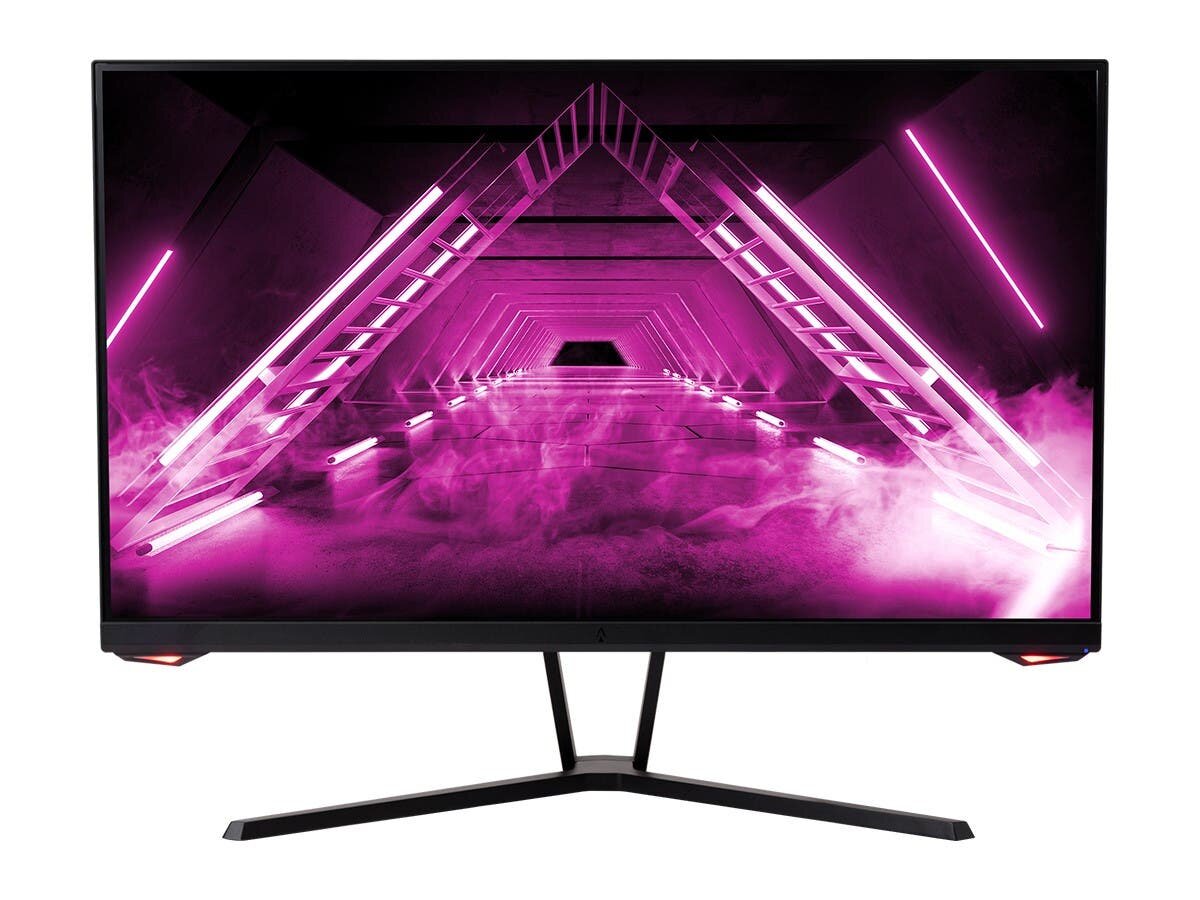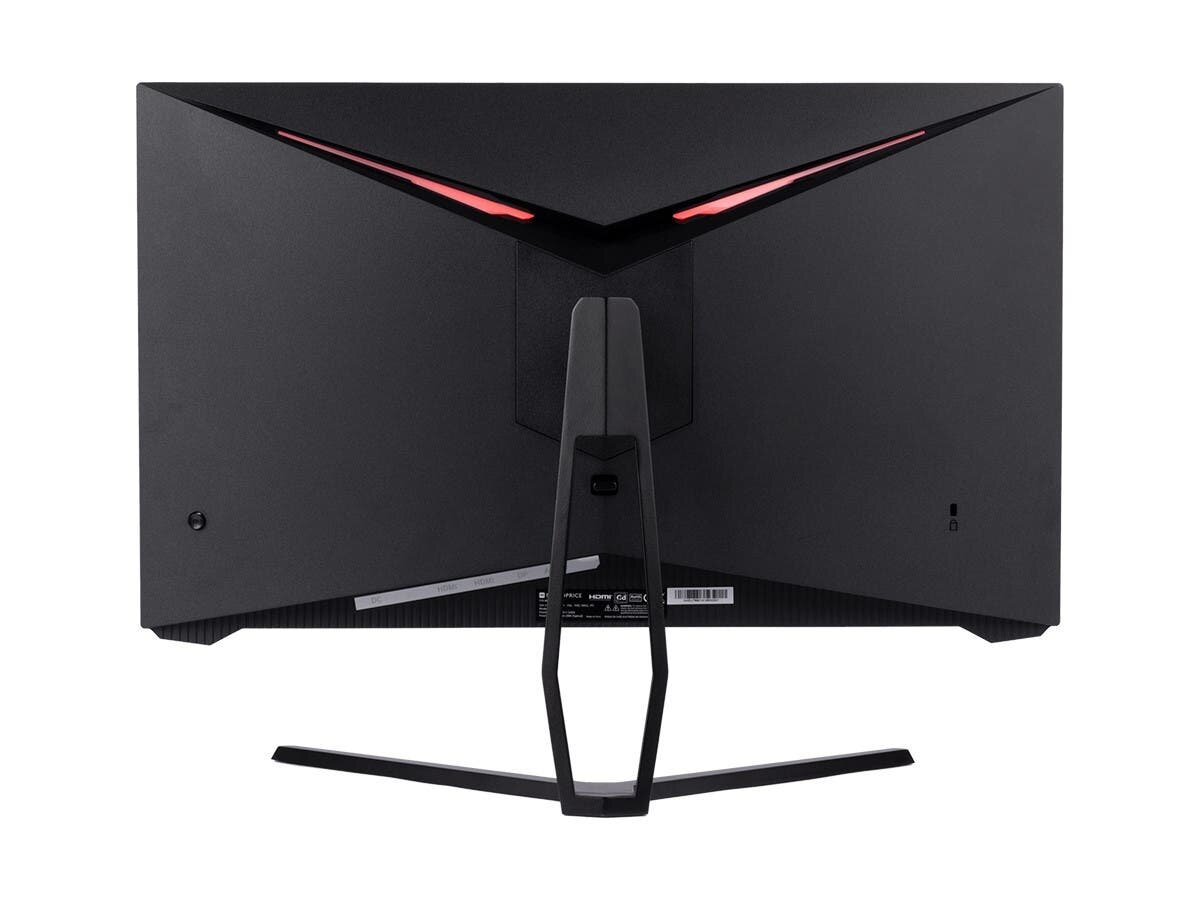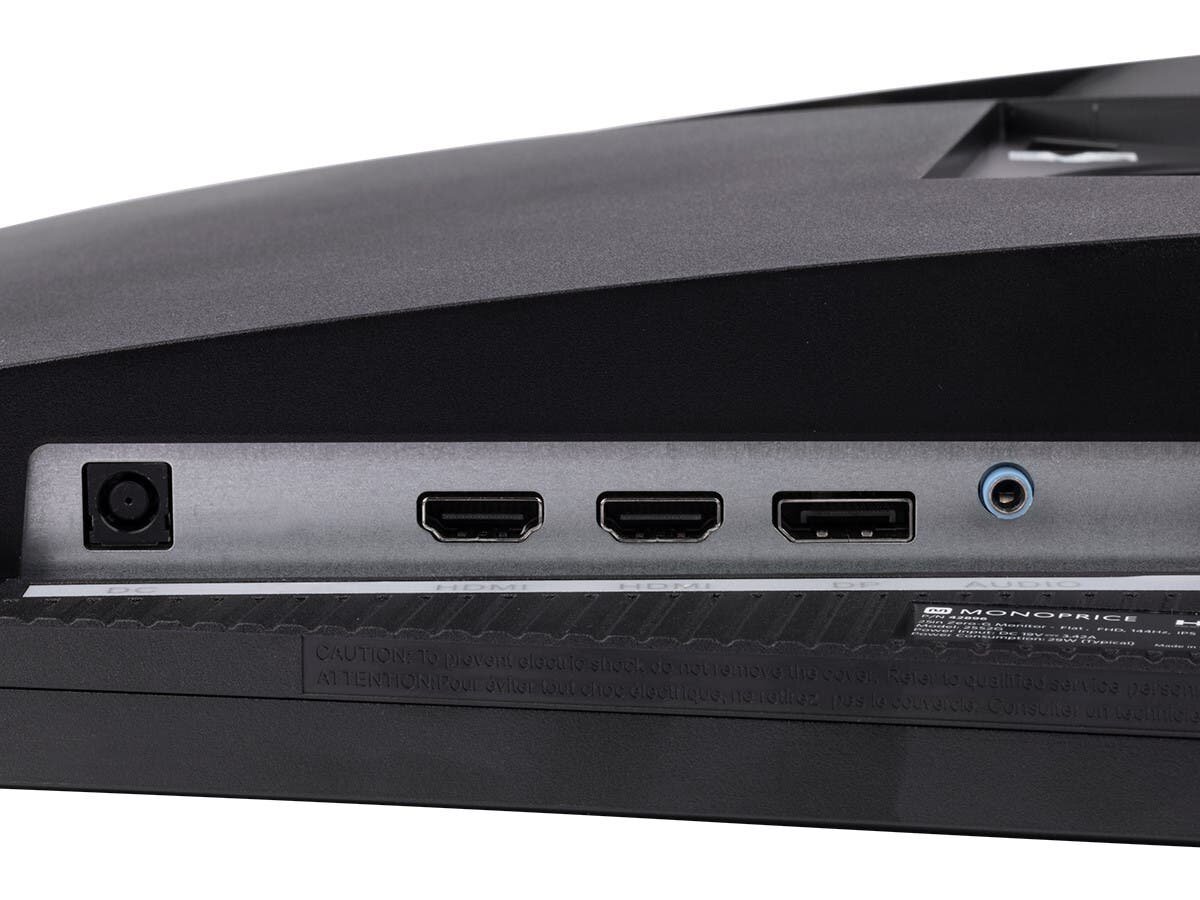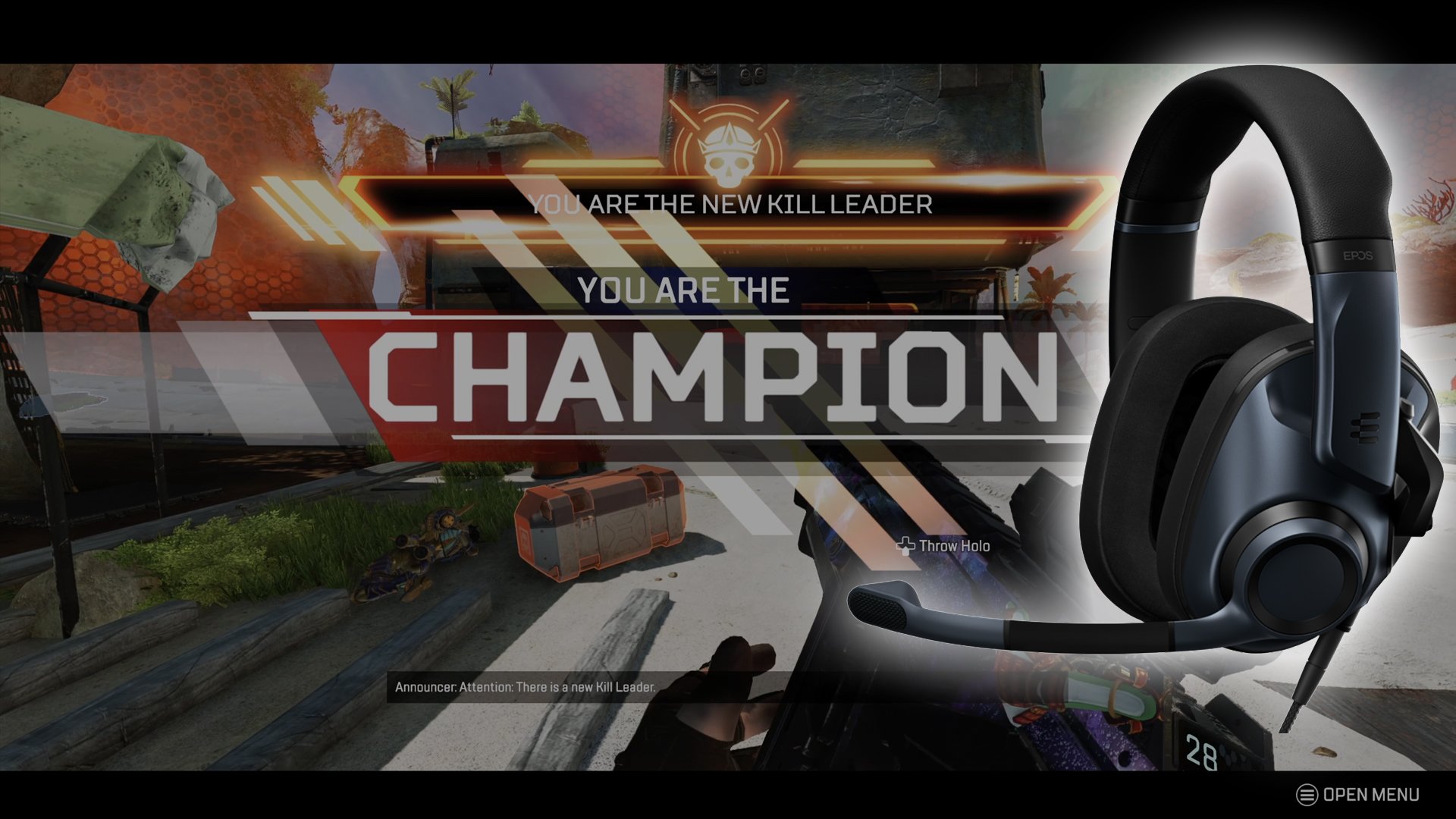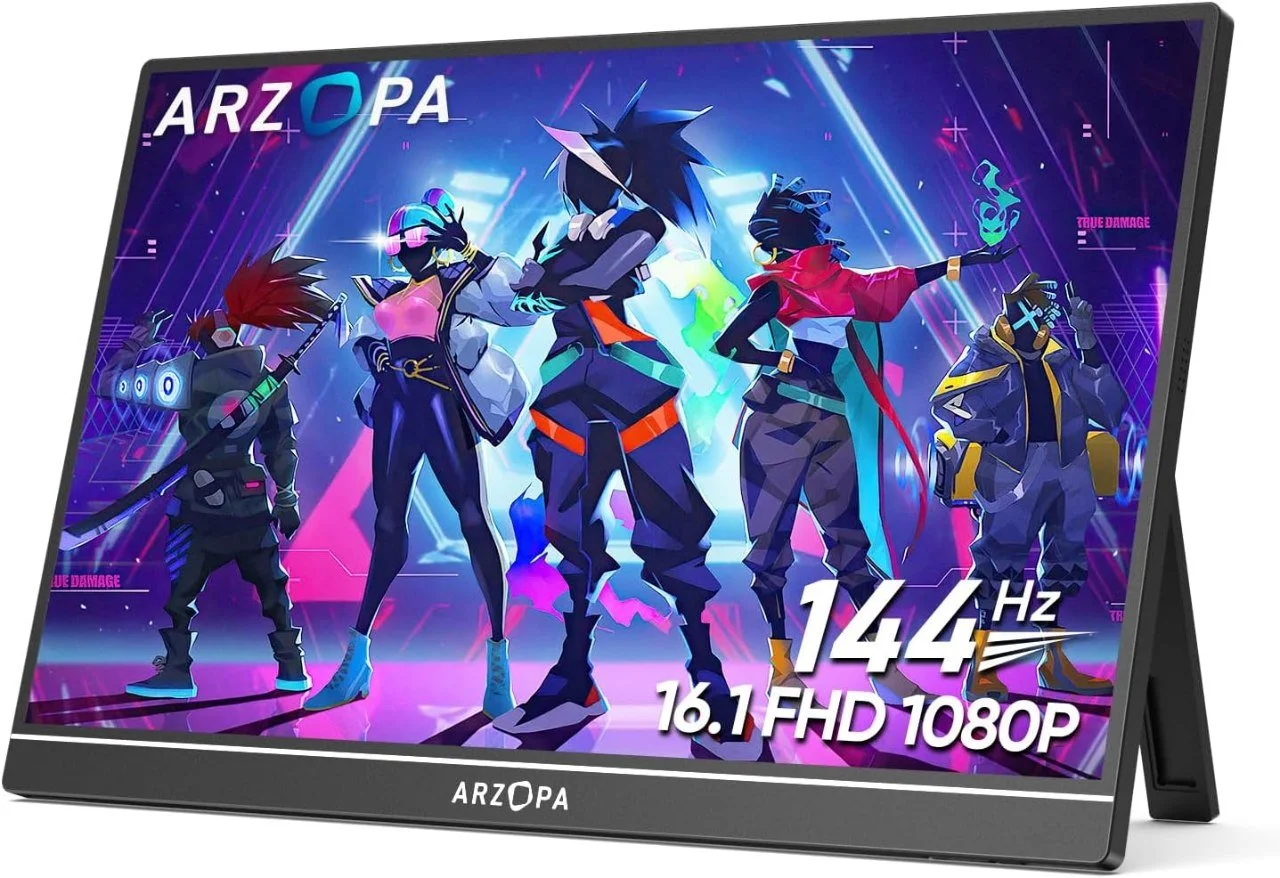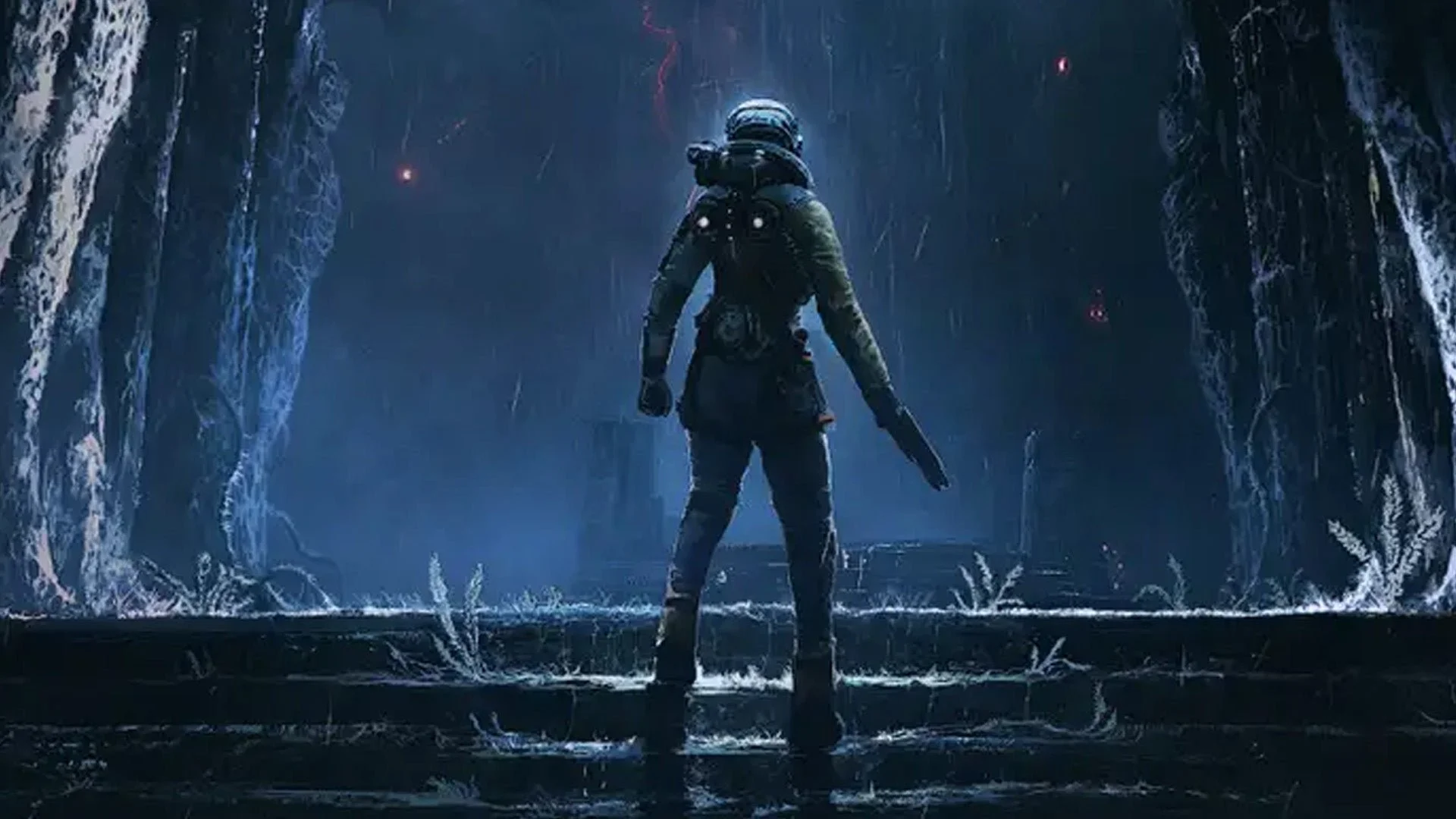Diving into Monoprice’s growing arsenal of PC gaming peripherals and accessories has been a fun journey. We have only just scratched the surface of what the Dark Matter brand brings to the table, however, and today I am bringing you all my thoughts on the Dark Matter 42771 gaming monitor. Monoprice offers a number of high refresh rate displays of varying resolution and sizes, and this particular model uses a 27-inch panel with a resolution of 1080P and a 165Hz refresh rate! While it doesn’t push for the highest resolutions found in today's gaming world, the higher frame rate ensures you a competitive advantage, and the 42771 also makes for a great companion monitor to the Xbox Series S.
What’s In the Box
Dark Matter 42771 provided on loan by Monoprice.
My review sample of the 42771 came in a plain black box with the Dark Matter logo and model number presented upon it. Inside the box, you will find the monitor, stand, DisplayPort cable, user's guide, and screws for assembling the stand or VESA mounting. Assembling the stand only takes a few minutes, and for VESA mounting purposes, it uses a 75X75 mounting pattern
Aesthetics And Tech Specs
The overall look of the monitor is very appealing to me with a clean aesthetic that isn’t overly gamerfied or bland. It is near-bezel-less along 3 sides, with the bottom being a little thicker and bearing the Dark Matter logo. Two angled pieces of plastic are housed on the underside of the monitor that contains a red LED which provides additional ambient lighting while the monitor is in use. Additional red LED lighting can be found in an angled recess on the rear of the frame that will light up the space directly behind it. Directly below is the monitor stand mount point which can be removed to reveal the VESA mount points. You have to use the included screws to get it all set up, but this does allow the 42771 to have a more stylized frame. The stand itself is fairly basic with minimal tilt support and no height adjustments, but it feels sturdy on my desk. Last up we have a variety of ports neatly tucked under a bottom lip that includes our HDMI and Displayport as well as power and audio out in the form of a 3.5 mm jack.
The Dark Matter 42771 comes with the following specs.
Product ID: 42771
Display Size: 27-inch
Maximum Resolution: 1920x1080p
Aspect Ratio: 16:9
Refresh Rate: 165hz
Video Inputs: 2x HDMI 1.4, and 1xDisplayPort®1.2a inputs
Panel Type: IPS
Panel Model: M270HAN0
Maximum Brightness: 350cd/m²
Default Color Temperature: 6500K
Contrast Ratio: 1000:1
Number of Colors: >16.7million
View Angles (H/V): 178/178°
Response Time: 1ms (MPRT)
VESA® Mounting Pattern: 75×75
Input Power: DC 19v, 3A
Typical Power Consumption: 30watts
Standby Power Consumption: .5watts
Dimensions (with stand): 619 x 477.5 x 237.4mm
Dimensions (without stand): 619 x 374.1 x 64.4mm
Weight: 7.2kg
Gameplay
Hooking up the 42771 for the first time was a fun experience. With its listed specs I wasn’t quite sure what to think about how it would handle a number of different devices, but seeing my kid’s Kirby game showing up on the screen with nice colors and not a hint of ghosting gave me a smile. The 27-inch panel size is a great size for playing games at a desk, and even with its 1080P resolution it didn’t feel like the image was any more blurry than my smaller 1080P displays. I know this is a big issue for some when it comes to bigger displays, and why they will usually go for 1440P or 4K sets at this size instead. Sure, when you get your face all up in its business you might start to pick out the individual pixels, but at that point you aren’t playing your game, so stop it!
Again, I am really impressed with the out-of-the-box color calibration of the 42771. Each color pops on the screen and really does justice to the Nintendo Switch’s first-party line-up of games. The color temperature is on the warm side by default which isn’t typically my favorite, but it works well here. Of course, there are a number of selectable image profiles and color temps to choose from so you can further fine-tune the monitor for the perfect image output. Monoprice states the monitor has a 100% sRGB color gamut, so with some tinkering it should really shine for even the most color-accurate use cases. Thanks to the crazy viewing angles on the monitor you shouldn’t have to worry as much about being head-on with it to get those excellent colors either.
While the Switch gave me a good first impression of the 42771, it can’t cater to one of the monitor's selling points: high refresh rates. To dive into this experience I decided to use an Xbox Series S as most of its 120 FPS games are limited to 1080P output, making it a perfect fit for the monitor's capabilities. Sure enough, loading into Halo: The Master Chief Collection, the smoother gameplay was immediately noticeable over my 60 Hz monitor the system is typically plugged into. While the jump from 60 to 120 isn’t as extreme as 30 to 60 is, it is still nice to see! Unfortunately, it is hard for me to show this off at the moment due to my current equipment. Sorry phone, I'm throwing you under the bus. There is a growing list of games that are getting 120 FPS support for Series X and S, and for the lower specced hardware having a native 1080P panel with 120 FPS support can’t be beat. You get the benefits of a high refresh rate without any of the upscale problems that can be introduced on higher resolution panels. Other native 1080P systems like the Switch also benefit from that last part.
Moving on to the PC side of things, you can finally take advantage of the advertised 165 Hz refresh rate of the 42771. This is when things need to be more purposefully set up though. Hooking up a PC through HDMI will give you the option of selecting 120 Hz output, and through Displayport, will also open up a 144Hz mode. Neither of these is the stated 165Hz mode, so to take advantage of the advertised speed you need to have your PC hooked up through Displayport and then create a custom resolution with the 165 Hz refresh rate which you can then apply. Even at 1080P, 165 FPS will require decent hardware to achieve. For my aged GTX 1080 this proved a bit difficult in a few titles without lowering settings, and even then it isn’t a guarantee. When it happens, the results are quite pleasing. The 42771 also has built-in adaptive sync to help compensate for the occasional dips, though I haven’t personally noticed much of a difference in games with it on or off.
I wanted to take one minute here to talk about using the monitor's OSD. The power button found on the back of the display has the typical 4-way movement device that lets you navigate menus and adjust settings. While one direction will bring you into the proper OSD, the other 3 directions have their own set hotkey, like input and color profile swapping. The last direction brings up an on-screen crosshair that can prove useful in games that don’t always have one on display. Inside the OSD you have the typical options for image adjustments, which I covered a little earlier, a couple of audio options, input selection, and a number of extra things like being able to turn off the red LED’s. You can also make them flash on and off if that’s your thing. I am a big fan of being able to select the RGB range on the monitor for different input sources as well.
What It Could Have Done Better
Now as far as my complaints with the 42771 go, my biggest one is the display's brightness. It is not a bright display and it can take a while to adjust to it. The display also lacks any form of HDR, which shouldn’t be that unexpected, I suppose. I also take pause at not knowing exactly what type of adaptive sync technology is in use with the 42771, because you would expect it to be either Freesync or Gsync, and it not being stated means it is likely some weird or unlicensed implementation. Could this be why the feature seems to have no effect in my gameplay sessions? Probably. Otherwise, I have greatly enjoyed my time with the 42771 and am sad to send it back once this review has concluded.
Verdict
While the focus of the gaming world has shifted to higher resolutions, having a native 1080P monitor for 1080P content is awesome, and having higher refresh rates along with it is even better. For players looking to get a start in the competitive scene or have smoother performance in titles on PC or Xbox Series S, the 42771 offers a great picture, performance, and best of all: price! Combine all of this with a sleek look, larger display size (well, I guess that really depends on the person), and plenty of input ports, and you are getting a solid package. So long as you don’t need more advanced bells and whistles like HDR and Freesync, the Dark Matter 42771 might be one of the best entry-level high refresh rate monitors out there right now.

